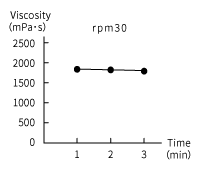Red bean paste or Anko is essential in Japanese Confectionary. There are many types of sweets made with red bean paste including red bean mochi, Oban-Yaki (a muffin type sweet with red bean paste inside), red bean doughnuts, and Monaka (wafer sandwich with red bean paste inside). The secret to the deliciousness of red bean paste is in the elegant sweetness of the Azuki beans, and smooth creamy texture. The texture of red bean paste is said to come from the starch in the beans expanding as they come in contact with water during the cooking process. The starchiness of the beans depends on the bean type and can affect the overall flavor of the paste.
It is said that the viscosity of red bean paste comes from one of the starch component found in beans called Amylose. Beans with low levels of Amylose tend to be more viscous. Once again, the flavor and sweetness of red bean paste is determined by the type of bean used. How the paste is made can also affect the texture and taste such as the cooking time, temperature, and how long the beans are steamed. If the beans are over cooked the red bean paste becomes too sticky.
The careful selection of high quality beans and the right manufacturing technology or method is essential in order to produce delicious red bean paste.
Viscosity of Anko (Red Bean Paste)
VISCO™ measurement examples
Spindle : A2L
Sample temperature : 30℃

Anko is made by adding sugar to cooked red beans and is further into a paste. Preferences regarding sweetness of the red bean paste depends on region and climate. The sweetness of red bean paste depends on the sweetness of the beans and the amount of sugar added, and how long the beans were cooked. Each manufacturer uses their own know how to determine the flavor of their red bean paste.